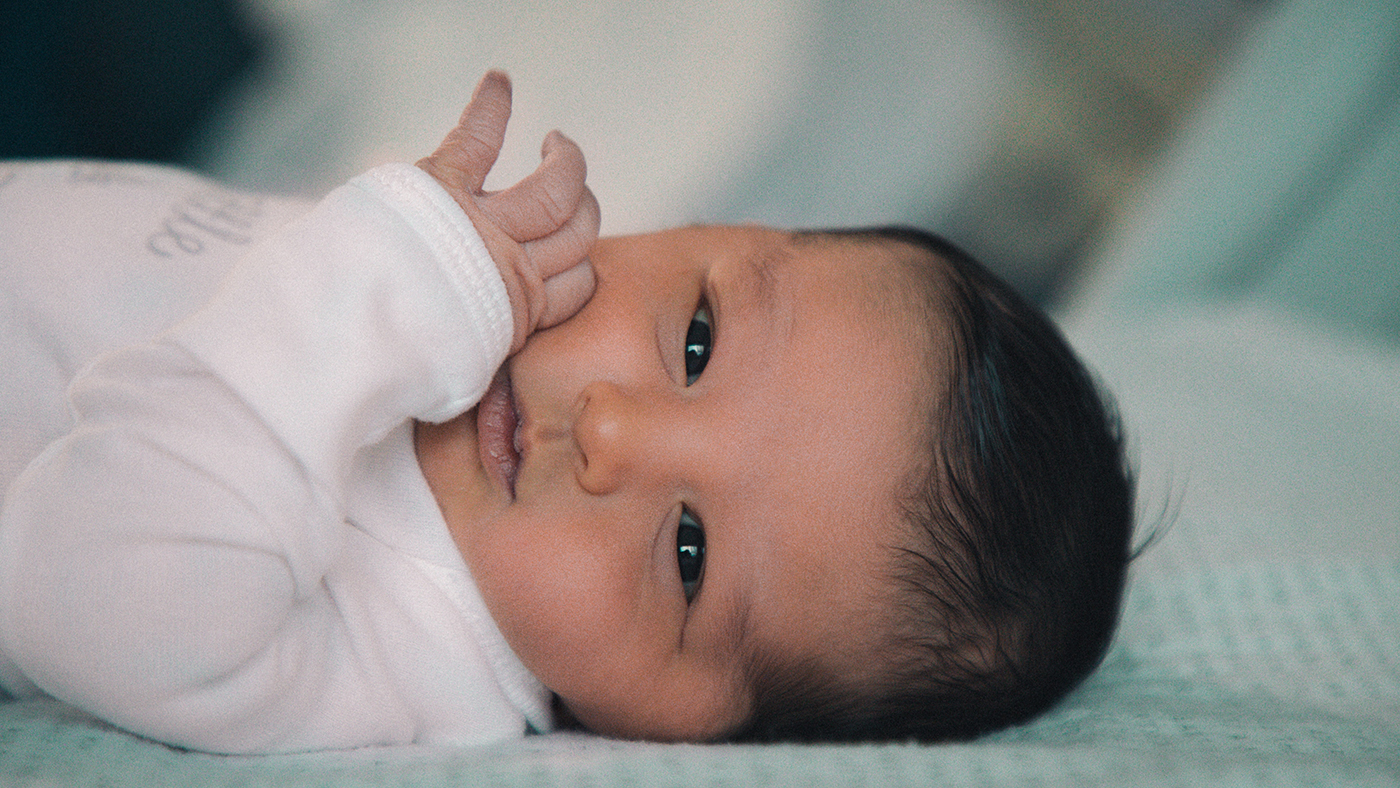Moves clenched hand more deliberately towards their mouth.

Before they were born their curled up position in the womb will have placed your baby’s hands close to their mouth and face and they will have started to put their hands in their mouth before birth.[1] The area of the brain linked to touch and movement around the mouth is one of the first areas to be active before birth and your baby’s brain will have started to make connections in response to their hands touching their face and mouth.[2] Your baby’s first movements are not well controlled, but you might notice that they are beginning to move their hands to their mouth more purposefully as they gain control of their movements.
Exploring Hands and Fingers
The area of the brain linked to movement and sensation of the mouth and tongue is the first to develop before birth and this area remains sensitive throughout life.[2] Your baby does not have the control of their hands that they need to explore objects with their hands and fingers and so will use their mouth to find out about the world. When they put their hands into their mouth they develop their awareness of their body as they link what they feel with their hands and with their mouth. When your baby touches their face the signals from their face and hands help them to understand their features and where their body begins and ends.[1] Your baby will have started to explore this and make these connections before they were born and further exploration will strengthen existing connections and make new connections.
Using Hands for Comfort
Your baby might put their hand in their mouth when they are hungry or for comfort as well as when exploring, as sucking can be comforting to your baby. Respond to their signals and if you think that they are putting their hands in their mouth because they are hungry or unsettled offer them a feed or something that you know they will find soothing. Developing control of their hands is closely linked to sensory development; your baby will begin to use touch to explore the world and use their hands to provide comfort, by sucking their hand or, as they develop control, stroking their face.
Your baby will use their mouth to explore the world for several months and you will notice that as they develop control of their movements they will bring toys and objects to their mouth to explore them. As their physical skills develop and they can use their hands and fingers in different ways they will begin to touch objects with their hands to explore them and as their vision develops they might also look closely at objects. They will begin to bring together information from their senses to help them understand new objects.
References
[1]. Addyman, C (2020) The laughing baby: The extraordinary science behind what makes babies happy. London: Unbound.[2] Goddard-Blythe, S. (2004). The Well Balanced Child: Movement and Early Learning. Stroud: Hawthorn Press.